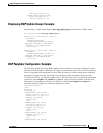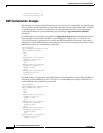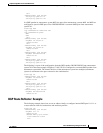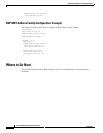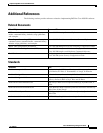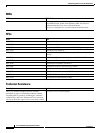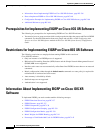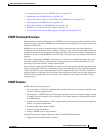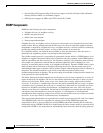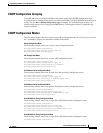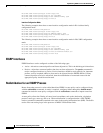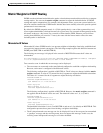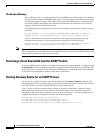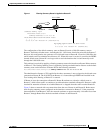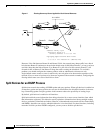
Implementing EIGRP on Cisco IOS XR Software
Information About Implementing EIGRP on Cisco IOS XR Software
RC-137
Cisco IOS XR Routing Configuration Guide
OL-14356-01
• Floating Summary Routes for an EIGRP Process, page RC-142
• Split Horizon for an EIGRP Process, page RC-144
• Adjustment of Hello Interval and Hold Time for an EIGRP Process, page RC-145
• Stub Routing for an EIGRP Process, page RC-145
• Route Policy Options for an EIGRP Process, page RC-146
• EIGRP Layer 3 VPN PE-CE Site-of-Origin, page RC-147
• IPv6 and IPv6 VPN Provider Edge Support over MPLS and IP, page RC-148
EIGRP Functional Overview
Enhanced Interior Gateway Routing Protocol (EIGRP) is an interior gateway protocol suited for many
different topologies and media. EIGRP scales well and provides extremely quick convergence times with
minimal network traffic.
EIGRP has very low usage of network resources during normal operation. Only hello packets are
transmitted on a stable network. When a change in topology occurs, only the routing table changes are
propagated and not the entire routing table. Propagation reduces the amount of load the routing protocol
itself places on the network. EIGRP also provides rapid convergence times for changes in the network
topology.
The distance information in EIGRP is represented as a composite of available bandwidth, delay, load
utilization, and link reliability with improved convergence properties and operating efficiency. The
fine-tuning of link characteristics achieves optimal paths.
The convergence technology that EIGRP uses is based on research conducted at SRI International and
employs an algorithm referred to as the Diffusing Update Algorithm (DUAL). This algorithm guarantees
loop-free operation at every instant throughout a route computation and allows all devices involved in a
topology change to synchronize at the same time. Routers that are not affected by topology changes are
not involved in recomputations. The convergence time with DUAL rivals that of any other existing
routing protocol.
EIGRP Features
EIGRP offers the following features:
• Fast convergence—The DUAL algorithm allows routing information to converge as quickly as any
currently available routing protocol.
• Partial updates—EIGRP sends incremental updates when the state of a destination changes, instead
of sending the entire contents of the routing table. This feature minimizes the bandwidth required
for EIGRP packets.
• Neighbor discovery mechanism—This is a simple hello mechanism used to learn about neighboring
routers. It is protocol independent.
• Variable-length subnet masks (VLSMs).
• Arbitrary route summarization.
• Scaling—EIGRP scales to large networks.
The following lists key features supported in the Cisco IOS XR implementation:
• Support for IPv4 and IPv6 address families.



